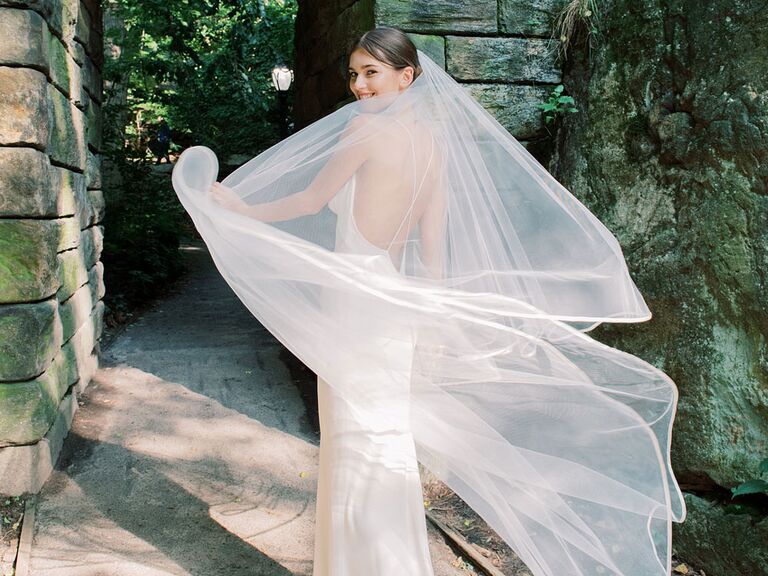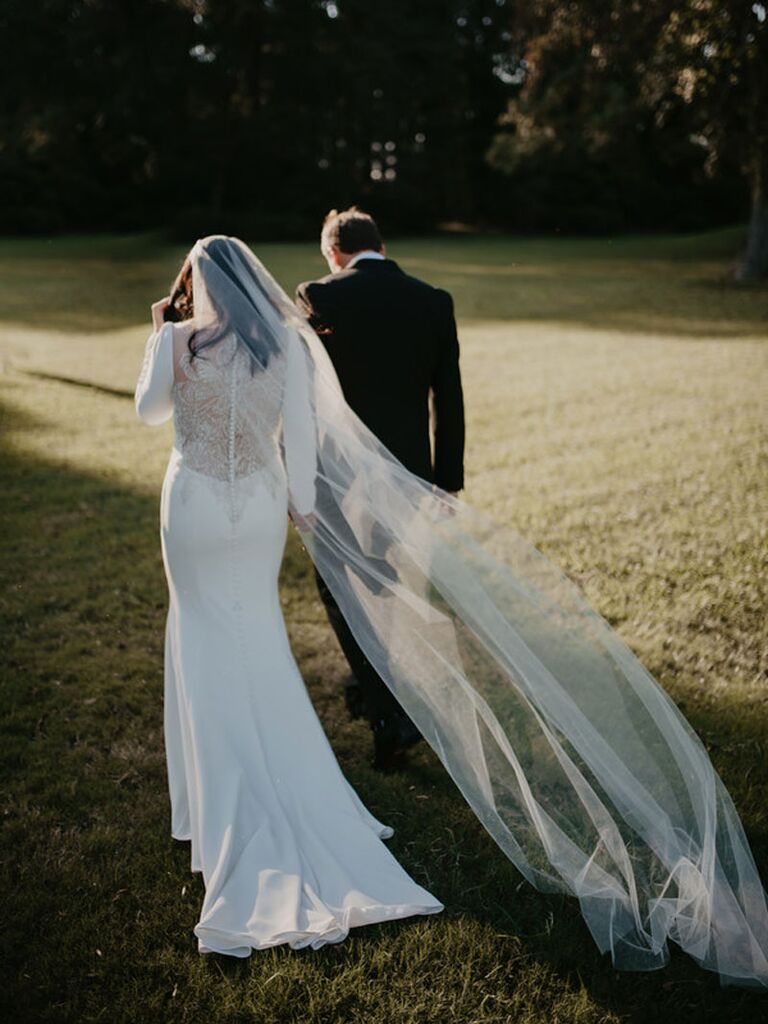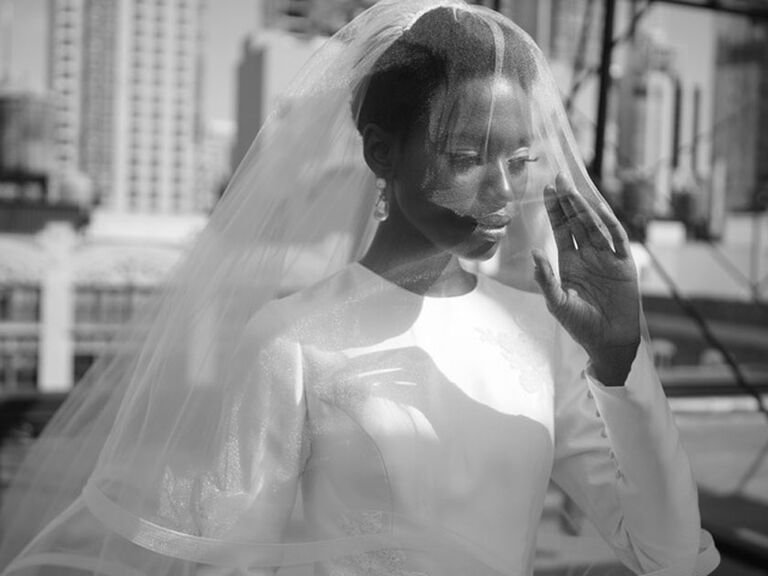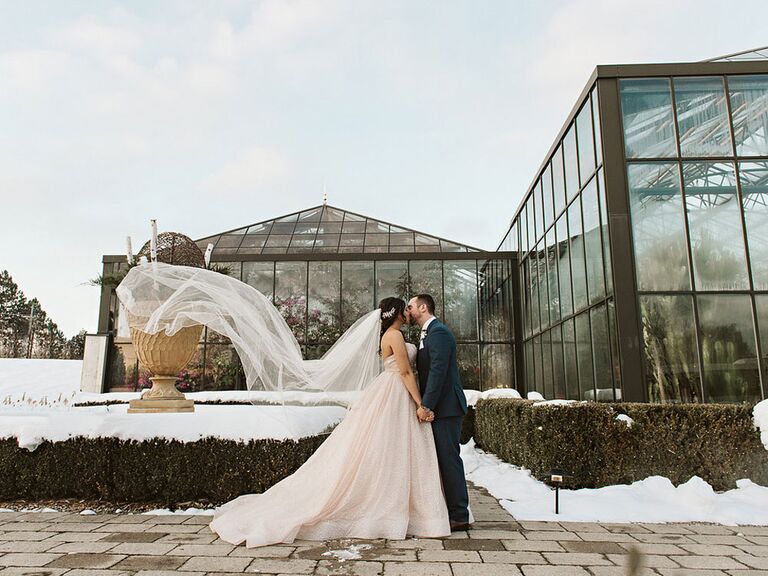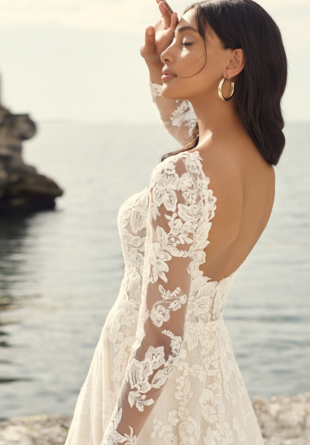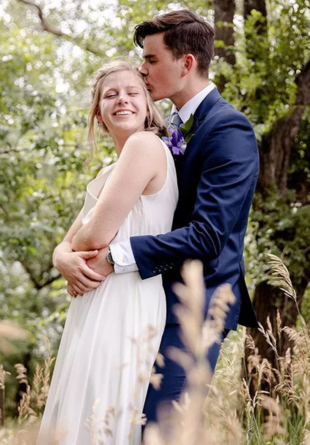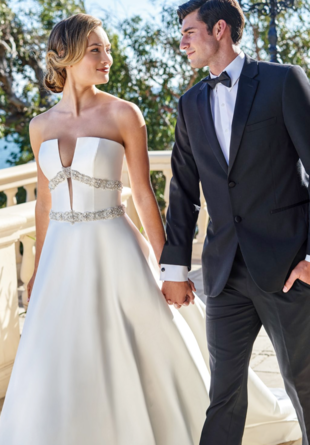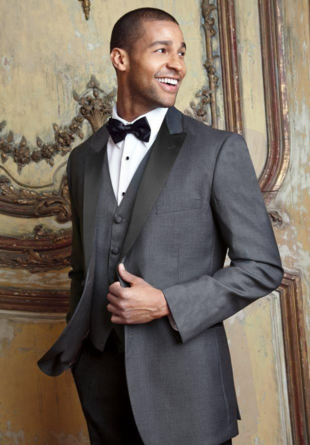The 3 Wedding Veil Care Rules You Need to Follow
In the weeks leading up to your wedding, you probably want to admire your dress every day—and we don't blame you. But while eyeing up your gown may seem like a fun distraction from your to-do list, it's important to keep it properly stored to avoid damage or discoloration before the big day. The same goes for your veil too. If you've opted to wear a headpiece with your dress, it's necessary to keep it protected before it's time to pin it to your hair. If not, you might find yourself frantically Googling "How to unwrinkle veil" or "How to fix veil damage" moments before you're set to walk down the aisle. Not ideal, right?
To help you avoid any fashion mishaps before the big day, we tapped industry experts to share the three veil care rules you need to follow. Find out how to store your veil before the wedding, how to unwrinkle your veil in case it has a few unwanted creases, and the best ways to preserve your headpiece after your nuptials. Follow these three rules to ensure your headpiece is in its best (and most Instagram-worthy) shape for your wedding day.
In this article:
- How to Store Your Veil Before the Wedding
- How to Safely Unwrinkle Your Veil
- How to Preserve Your Wedding Veil
How to Store Your Veil Before the Wedding Day
When it comes to storing your wedding dress and veil, the bridal salon or store where you purchased your outfit will likely give you proper care instructions. Generally, it's best to keep your attire in a cool, dark room as high temperatures and humidity can alter fabric color and texture. And while you might think storing your veil in a box is a safe choice, it's not the most ideal option. "Prior to a wedding, any veil is best stored on a hanger as high as possible so that it doesn't get wrinkled," says wedding dress designer Steven Birnbaum, noting that, if it does have to be folded, it's best to wrap it with tissue paper to minimize creases.
A dry closet is the best place to store your veil before the wedding, but it should ideally be in a protective bag no matter its location. "It's best if a veil can hang fairly open, because the more a veil is folded, the more wrinkled it can become," says veil designer Toni Federici. "However, leaving a veil out to the elements is not recommended. In the long term, light can discolor the fabric and some components may even oxidize. While these situations can take months to years to occur, they are a risk to keep in mind. Since the fabric is very delicate, a garment bag will keep it protected."
How to Safely Unwrinkle Your Veil
By hanging your veil in a safe environment, you minimize the risk of having deep creases in the fabric—but small wrinkles aren't uncommon. If you want to have your veil as crisp as possible, leave the heavy-duty unwrinkling to the pros. "Professionally unwrinkling a veil is always the safe bet," Federici explains. "The salon where you order your veil will likely have a steaming or preparation service available before pick up. These professionals are intimately familiar with the limits and needs of bridal materials."
But, if you pull out your headpiece on the wedding day only to find a few pesky folds, don't panic! There are a few DIY tricks to safely unwrinkle your wedding veil. One thing to avoid, though, is picking up a traditional iron. "While ironing a veil is possible, it's easy to burn or melt the fabric with improper temperatures or handling," Federici says, noting that steaming is the best (and safest) way to easily remove creases. If you don't have a handheld steamer nearby, all you need is a hot shower. "You can create a mock steam room by hanging the veil inside an enclosed washroom and running a very hot shower for a few minutes," Federici explains. "This can also be an invaluable option for destination weddings."
For veils that have detailed embellishments or delicate borders, a handkerchief will offer additional help. "If the veil has a lace border that is badly wrinkled and the steaming doesn't work, it will need to be pressed," Birnbaum advises. "While this can be done professionally, you can also press out the wrinkles with a handkerchief or light fabric over the lace."
Another way to minimize veil wrinkles is to put it on right before you walk down the aisle. "If you have a long veil, I recommend waiting to put it on until you've arrived at your ceremony site so you aren't sitting on it in a car, which can risk having it damaged or wrinkled," says wedding dress designer Jenny Yoo. "And, be careful that any jewelry you're wearing doesn't catch on the veil."
How to Preserve Your Wedding Veil
Once your wedding day is over, consider what you want to do with your dress and veil. While you can resell or repurpose your outfit, preserving it is a common option. You can go through a professional service, like Wedding Dress Preservation by The Knot, or you can ask your bridal salon about cleaning and preservation services offered. "A professional preservation service will often include the veil with the bridal gown to keep it fresh," Federici explains.
If your headpiece has any noticeable stains or spots from the wedding, it's best to leave the cleaning to the bridal fashion experts. "Veils should not be dry cleaned as it can damage some materials," Federici adds. "Spot cleaning by hand is the best option if the need should arise."
Once you've gotten your veil professionally preserved, keep it in a safe space in your house. "After cleaning, the veil can be folded with acid-free tissue paper, which will help prevent discoloration as well as oxidation of any beads," explains Yoo. "Then, it should ideally be stored in an air-tight box in a regulated area of the house, though not a basement or an attic."
Regardless of which preservation method you choose, investing in proper care is the best way to keep your veil pristine for years to come.
